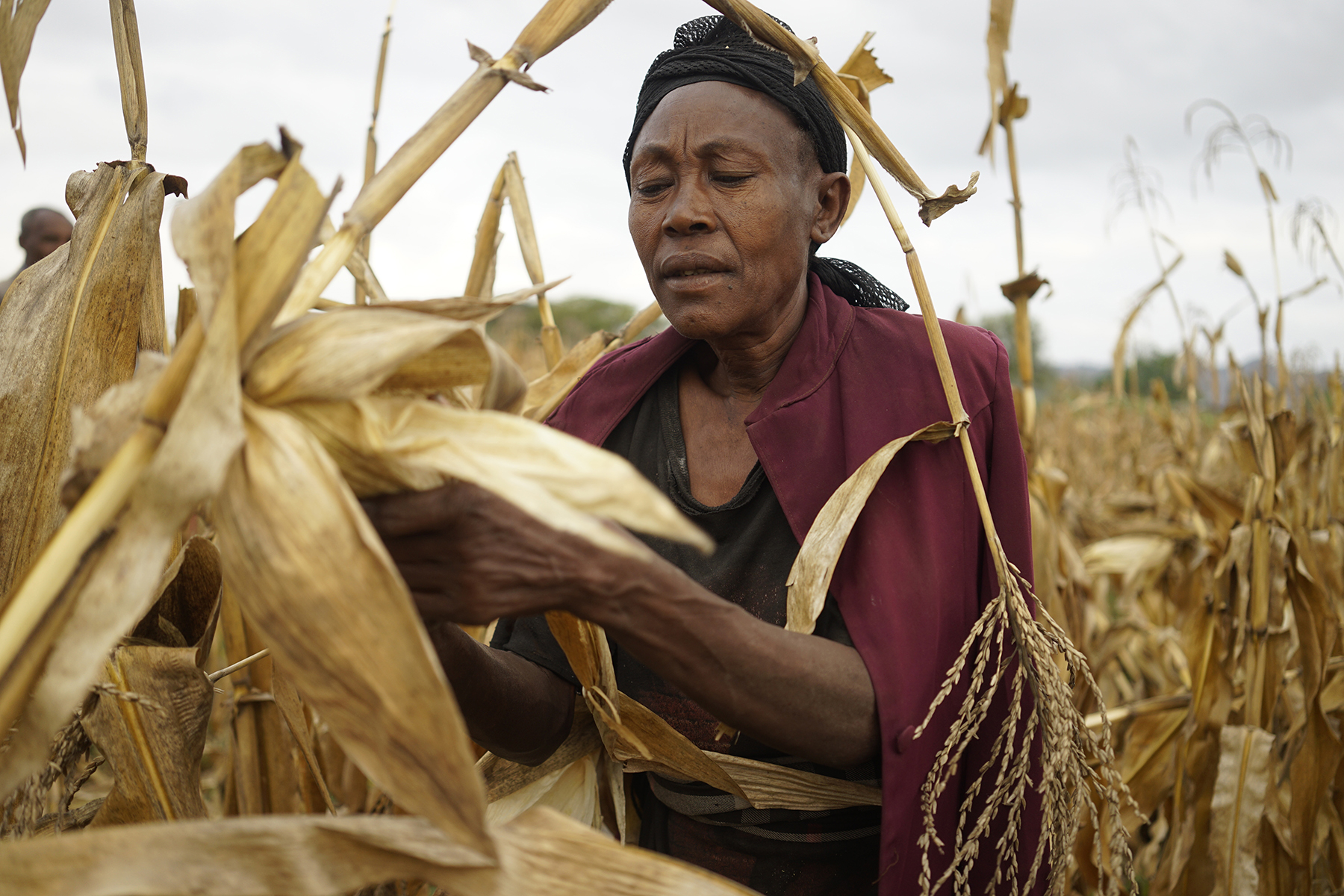Africa
CIMMYT’s work in Africa helps farmers access new maize and wheat systems-based technologies, information and markets, raising incomes and enhancing crop resilience to drought and climate change. CIMMYT sets priorities in consultation with ministries of agriculture, seed companies, farming communities and other stakeholders in the maize and wheat value chains. Our activities in Africa are wide ranging and include: breeding maize for drought tolerance and low-fertility soils, and for resistance to insect pests, foliar diseases and parasitic weeds; sustainably intensifying production in maize- and wheat-based systems; and investigating opportunities to reduce micronutrient and protein malnutrition among women and young children.
How improved maize gives options to farmers
 Nutrition, health and food security
Nutrition, health and food security
Improved seeds resilient to drought, disease and other stresses allow farming families to invest more in their livelihoods and children’s futures.
Tanzania seed company increases demand for drought-tolerant maize
 Nutrition, health and food security
Nutrition, health and food security
Locally adapted marketing initiatives are successfully converting farmers to the high-performing, drought-tolerant maize variety Lubango in Tanzania.
SIMLESA meeting reveals many successes, gears up for phase II
 Nutrition, health and food security
Nutrition, health and food security
SIMLESA discusses progress, achievements, and ways forward through 2018 at annual meeting.
CIMMYT kicks off 50th anniversary celebrations in southern Africa
 Climate adaptation and mitigation
Climate adaptation and mitigation
CIMMYT’s Southern Africa regional office celebrated 50 years of agriculture research for development in Harare, Zimbabwe.
Millions of smallholders in Africa benefit from climate resilient drought-tolerant maize
 Climate adaptation and mitigation
Climate adaptation and mitigation
At least 40 million smallholder farmers in sub-Saharan Africa are profiting from more than 200 new drought-tolerant varieties of maize.
Educational video helps Kenya farmers learn benefits of drought-tolerant maize
 Capacity development
Capacity development
A new video aimed at raising awareness among farmers about high-yielding, drought-tolerant maize varieties is set for distribution in eastern Kenya.
At 50-year mark, CIMMYT scientists strive for gender equity
 Gender equality, youth and social inclusion
Gender equality, youth and social inclusion
Efforts to meet agricultural needs of women farmers to bolster global food security took shape in CIMMYT’s early days.
Participatory approaches to gender in agricultural development
 Gender equality, youth and social inclusion
Gender equality, youth and social inclusion
For gender specialist Mulunesh Tsegaye participatory approaches are the best way of ensuring agricultural development projects are responsive to gender dynamics.
Kenya gives conditional approval to grow genetically-transformed maize
 Nutrition, health and food security
Nutrition, health and food security
KALRO will conduct National Performance Trials in Kenya using genetically-transformed, insect resistant maize beginning on Feb. 9.
Amidst intense drought, investment in scientific research is key
 Climate adaptation and mitigation
Climate adaptation and mitigation
El Niño drought-related stress is triggering hunger and food insecurity. Investment in scientific research is key to combating such events.
Thirty years of supporting maize farmers in southern Africa
 Nutrition, health and food security
Nutrition, health and food security
CIMMYT’s Southern Africa Regional Office celebrates three decades of developing new maize varieties for farmers across the region.
Climate change’s surprising opportunity for East African maize farmers
 Climate adaptation and mitigation
Climate adaptation and mitigation
With the right varieties, future maize yields in East Africa’s highlands could soar as temperatures increase.
Modeling Africa’s agricultural future
 Capacity development
Capacity development
CIMMYT held its second training workshop on “Crop Modeling under Uncertain Climate,” from 7-11 December 2015 in Addis Ababa, Ethiopia.
Balancing economy and ecology: agriculture vs. nature
 Climate adaptation and mitigation
Climate adaptation and mitigation
Reconciliation of the right to develop and environmental protection must move beyond global dialogue and be put into practice.
